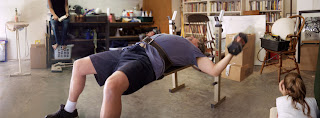“Solipsism is the philosophical idea that only one's own mind is sure to exist. The term comes from Latin solus (alone) and ipse (self). Solipsism is an epistemological or ontological position that knowledge of anything outside one's own specific mind is unjustified. The external world and other minds cannot be known and might not exist. In the history of philosophy, solipsism has served as a skeptical hypothesis.”
"Was everyone else really as alive as she was?...If the answer was yes, then the world, the social world, was unbearably complicated, with two billion voices, and everyone's thoughts striving in equal importance and everyone's claim on life as intense, and everyone thinking they were unique, when no one was." - Ian McEwan, Atonement
Solipsism
Laurence J. Lafleur
http://www.jstor.org/stable/20123287
“There are two common attitudes towards Solipsism to which all serious philosophers should object. One is that attitude which takes it as a fictional speculation, a convenient way in which the adolescent mind may pleasantly day-dream; the other is the related attitude of those philosophers who dismiss the doctrine with as much levity as the adolescent holds it.”
“Every man experiences dreams and imaginations, the nature of which is admittedly subjective. It is perfectly possible for me to propose that this same lack of objectivity may characterize all experience. I may conceive that I am a god making the world for my own amusement, being real beyond the reality of this my dream. But this imagined god-head is merely the dream of an idle moment, for I cannot seriously suppose that were I to dream I would dream in exactly this way. Had I the making of this world, it would be a braver, better world than it is….”
Lafleur, Laurence J. "Solipsism." The Review of Metaphysics 5.4 (1952): 523-528.
JSTOR. Web. 24 Nov. 2010.
Why Not Solipsism?
Elliott Sober
http://www.jstor.org/stable/2108438
“Solipsism poses a familiar epistemological problem. Each of us has beliefs about a world that allegedly exists outside our own minds. The problem is to justify these nonsolipsistic convictions. One standard approach is to argue that the existence of things outside our own sensations may reasonably be inferred from regularities that obtain within our sensations.”
Sober, Elliott. "Why Not Solipsism." Philosophy and Phenomenological Research
55.3 (1995): 547-566. JSTOR. Web. 24 Nov. 2010.
Although solipsism can be psychologically and philosophically complicated, I am drawn to the idea of your own mind being the creator of all of your own world. It can be seen as a mental illness, but also as a way of thinking within your own mind, similar to surrealism. It may not make sense in the "real" world, but it does to the creator. I can create whatever I want because it is real and influential to me.
























